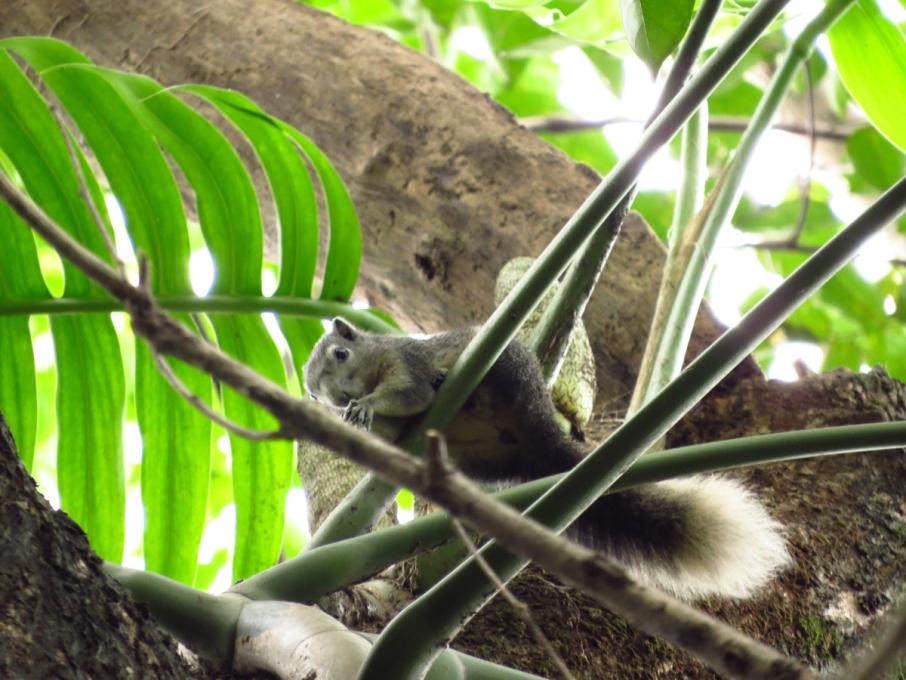The Cornell Lab Bird Academy › Discussion Groups › Virtual Educator Retreat: Inspiring Investigations through Citizen Science › Virtual Educator Retreat: Symbiosis in the Soil – Classroom Case Study
-
I have not done any of the projects yet. It is helpful reading about the projects from the other participants. I anticipate either having students participate in bird watching and recording frequency of activity as it relates to various bird seeds available.
-
- What citizen-science project did you do? Previously, I did Frog Watch. This project includes going out to areas with frogs and toads, listening for calls, and keeping track of numbers. - What challenges, if any, did you experience? Sometimes, you could show up to a location and find nothing! - What learning outcomes might you expect from having your students participate in this project? Even you set up a project just right, you may have unexpected outcomes. This project also helps students get better at scientific observation and collecting data.
-
I haven't worked with a citizen science activity with my students but I have plans to do so once school starts again next month. I am planning to work on Project Feeder Watch with my students. I anticipate we may have challenges with motivation with a few of my students and that we may run into logistical issues with getting outside in the winter but I don't think either of these challenges will be prohibitive. Expected learning outcomes from this project are that the students will gain a greater appreciation of the birds in our area, that their knowledge of birds in our area will grow, and that they will hone their observation and inferencing skills. I also expect their idea of what a scientist looks like and how they can contribute to science will change to include themselves in the picture.
-
Motivation is always a hard thing to instill and it can take a while, but boy is it worth it to see the kids invested! Once they know a few birds they will feel more empowered and that will help build motivation to keep learning!
-
@Austin I hope so! My groups meet only once a week so I'm thinking I'll need a "report board" for all of the off-class bird sightings they'll want to tell me about. I can see that taking up A LOT of class time! :)
-
-
What citizen-science project did you do? We started collecting monarch butterfly caterpillars and eggs to raise and release. There are a few sites that take this information so we have a few students using different ones. What challenges, if any, did you experience? So far our only challenge has been how to get the most kids invested. Even though we have the same students all summer, each day we have different students so it's been a challenge to allow them all the same 'first experience' with collecting and observing as we can only handle so many on sight. We have followed up each day on locations, status, size, stage, etc. but the most excited kids were the ones who made the initial discovery, not the ones who are following up on another students finding. What learning outcomes might you expect from having your students participate in this project? We hope the students will learn the basics of monarchs and their life stages. We hope they learn the important of milkweed in our area and will help protect the plants to directly help protect the species. We want them to learn the unique relationship that monarchs have created with milkweed and we want them to just enjoy and have fun with nature!
-
I am working on Project Squirrel. It is challenging right now to spend a great deal of time outside, as the temperature and humidity is extremely high. The mosquitoes are also out in high numbers, so it is very challenging to be outside for long. I expect that students would learn to observe, record data, take photographs, keep track of dates and times, create graphs, observe patterns, learn different kinds of squirrels such as the grey squirrel versus the fox squirrel, and ask questions about trends in squirrel populations.
-
That one does look interesting! We have tons of them, but they are all the same kind.
-
Thank you Maria for bringing up the citizen science project. Will explore on Project Squirrel and see the possibility of adapting the protocol of collecting data in the environment and habitat in the school I am teaching (Philippine Science High School - Main, Quezon City, Philippines). The invasive tree squirrel Callosciurus finlaysonii has proliferated in the 17 acre campus ground (actually already a concern in the Metropolitan Area and adjacent provinces). I think this will be a very interesting research to document how the species have adapted in the local habitat, establish the population, and determine its effect on the local wildlife (especially on the population of wild birds in the school).

-
@Jon Javier This is a great squirrel photo. Finding out how their populations affect other populations of different species in the area is interesting.
-
This sounds like an amazing project! I am definitely going to have to check it out as I know the students will embrace it. We had a squirrel visit our bird feeder on such a regular basis the students even named him!
-
Read More:
